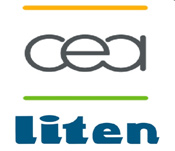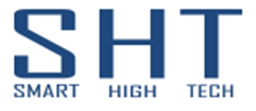SiC semiconductor technology for energy management
Power electronics inverters are evermore present in many market segments such as domestic and office appliances, heating, ventilation and air conditioning, lighting, computers and communication, factory automation and drives, traction, automotive and renewable energy. According to the estimation, the amount of energy controlled by power electronic converters is likely to increase from 40% in 2000 to 80% in 2015. The main advantage of using power electronics converters for energy management is that can be fashioned and so perfectly adapted to the loads its feeds. However, the electric devices inside the power converters generate losses that affect the overall efficiency (between 80% to 96% depending on the power range) of the system. The emerging SiliconCarbide (SiC) or Gallium nitriure (GaN) power devices have showed higher performances in terms of reduction of losses (up to 50% less losses) compared to the actual silicon power devices. The associations of this SiC technology with efficient cooling solutions will help to increase the power electronics converters efficiency with at least 1 point and in the same time reduce their size and make them more cost effective.
Silicon Carbide (SiC) is a semi-conductor material, creating a breakthrough in the performance of power electronic components. This comes from its remarkable physical properties as
- dielectric withstand , factor 10 versus Silicon
- thermal conductivity, factor 3 versus Silicon
- maximum operating temperature, 600°C instead of 200°C
The conjunction of these 3 performances, unique for semiconductor substrate except diamond, is ideal for powerelectronics: The high dielectric withstands permits to have thinner semi-conductor layers. Thin layer means low conduction resistance and consequently low power losses. Thanks to the excellent thermal conduction, residual power losses can be evacuated 3 times more efficiently. And in addition, the tolerance of the material to temperature rise is 3 times higher than for the Silicon component. That’s why, even if Silicon technology continues to have incremental evolutions with new components topologies, SiC is considered as a real technological breakthrough permitting to extend the domain of semi-conductors components for high voltage or low loss applications. Anyway, Silicon will never compete with Silicon Carbide above 1000V.
The development of SiC component is currently in a very active phase. The first target of the semi-conductor market was to develop the simplest function: the diode. Several companies, as Infineon, STMicroelectronics, Cree already have Schottky diodes in their catalogue, since year 2000. Other companies like Rohm and Mitsubishi are also prepared to enter quickly this market. The major application of this component is for power factor correction in power supply applications. Currently, the R&D efforts are focused on the design and manufacturing of the first SiC switch. The stakes are considerable, because this function is the base of most power electronic applications and the availability of cost effective SiC switch will really be the turning point for the deployment of the technology. Two alternative SiC switch designs are today in competition: MOSFET and JFET. The MOSFET switch, adopted by STMicroelectronics and Cree, has the advantage of a total functional compatibility with the Si MOSFET but at the expense of great development and manufacturing difficulties.
At the opposite, the JFET structure presents numerous advantages and is adopted by the majority of players: Infineon, Semisouth. The major advantage is its simplest manufacturing process, which should allow better reliability and lower price.
JFET transistor exists in two different versions, normally OFF or normally ON, depending of its default state. Normally ON JFET behaves as the Si JFET switch. But Normally OFF is a new default state for a JFET, offering new application opportunities
First commercial SiC switch (JFET) was introduced on the market 2009 by SemiSouth. First commercial applications are high-end power supplies, solar inverters and electric vehicule
SiC devices benefits for Schneider Electric products
The potential benefits brougth by the SiC power devices are:
- Higher efficiency due to the smaller power losses.
- Reduction of passive devices (as inductances or capacitors) due the the higher switching speed
- Higher ruggedness due to the high temperature capabilities of SiC components
- Higher junction temperatures and use in harsh environments
Motor drive
As an example, the substitution of 6 Si diodes in motor drive, by their SiC equivalent, provides a 35% reduction of energy losses, due lack of recovery current in the SiC Schottky diode. The next step will be the development of full SiC drive, combining SiC diodes and transistors. An evaluation made by Mitsubishi and Powerex established a power loss reduction of 60% and a volume ration of 1/3 for a 22 kW drive
Solar Inverter
Solar inverter converts the energy generated bythe photovoltaic panels and injects it on the electrical network. From the customer point of view, the principal value of a solar inverter is its efficiency, in order to extract the maximum of energy of the system, and consecutively reduce the return on investment period. Commercial inverters with Si-IGBT achieve efficiency between 95 and 98% depending on the power ratings and the inverter architecture. Our objective in SmartPower is to reach 99% efficiency using the new low loss power module
GaN semiconductor technology for RF emitting modules in aerospace
On the global Surveillance radar market there is a very wide range of applications depending on the carrier platform and its payload capability thus on the missions to perform by the System. In the past Thales Systèmes Aéroportés (TSA) has always been a major actor, to provide adapted solutions to its customers. TSA has developed the technology to make Active Electronically Scanned Array (AESA) based on Emission/Reception (E/R) modules with gallium arsenide components. This technology, which was first available for combat radar and warfare systems and has now many civil applications for surveillance due to the superiority of AESA over mechanical antennas, as generally agreed within the scientific community and equipment manufacturers.
Interest in using GaN can be explained as follows:
- As a III-V material, GaN can form alloys with AlN and InN, allowing the bandgap to be varied and allowing the growth of complex heterostructures. GaN, the most stable form, exhibits piezoelectric effects.This leads to the presence of piezoelectric charge at interfaces, giving a 2-dimensional electron gas with an electron density larger than that created in GaAs HEMTs using intentional doping. The electron mobilityat 300K is about 1500cm²V-1s-1, and the saturation velocity is 1.4x107cms-1, in comparison to values of 8000cm2V-1s-1 and 0.7x107cms-1 in GaAs. The large bandgap of 3.4eV results in a high breakdown field of 3MV/cm, about an order of magnitude larger than GaAs. The intrinsic noise performance of GaN, as determined by the magnitude of the drain current noise sources, is comparable to that of GaAs. The thermal conductivity of GaN at 300K is 190Wm-1K-1 and that of SiC is 400Wm-1K-1, in comparison to 50Wm-1K-1 for GaAs. The GaN high breakdown field allows an increase in bias voltage by a factor of at least 5 and with the larger electron density gives maximum power densities at least a factor of 10 larger than inGaAs HEMTs. Devices operate up to higher temperatures than in GaAs. Combined with the increased thermal conductivity, this means that the higher power density can be utilised effectively.
- Overall the area of a GaN MMIC will be a factor of 3-4 times smaller than a GaAs MMIC of the same total power as the higher power density in GaN allows a smaller gate width to be used for a given total power, leading to a reduced number of fingers and the size of most passive components, including via holes and bond pads, will not scale with power density.
As we want to address more and more compact equipment architectures (in order to enlarge potential market), the RADAR’s RF front-end size becomes a clear constraint: the path that THALES Systèmes Aéroportés chose is to design non populated arrays while using high power amplifiers addressing several transmission patches. In that respect, GaAs solutions do not comply anymore with required transmission power: GaN components are the main option (as they offer typically much higher power transmission than GaAs).
The next AESA will therefore use GaN High Power Amplifiers (HPA) in for Emission/Reception (E/R) modules. Modules will be designed to be compatible with wide ranges of applications such as surveillance radar. GaN will therefore replace existing current GaAs technology. GaN will allow radars to work with increased power and improved compactness. The aerospace industry is already developing some of the key electronic components for the modules, however several challenges have still to be overcome related to the thermal management of the components in order to meet acceptable temperatures for performance and reliability objectives.
In addition, the existing cooling techniques currently used for on-board avionics and aeropspace equipment are not compatible with the heat flux foreseen (>50W/cm2) for the next generation of aircrafts. Thermal management issues were pointed out as the most critical challenge in designing compact and portable electronic devices. The International Technology Roadmap for Semiconductors (2007) indicated that the heat dissipation rate from a single-chip package is expected to reach about 120 W for a cost-performance and up to 220 W for a high-performance single-chip packaging technology, respectively. It is generally agreed within the scientific community and equipment manufacturers that current air-cooling technologies are asymptotically approaching the limits imposed by available cooling area, available air flow rate, fan power and noise.
Therefore a thermally efficient packaging and temperature management of RF modules are a necessity for the GaN technology to be successful at an acceptable cost for surveillance radar.








